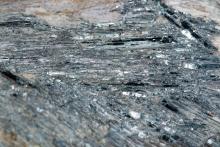A geophysical survey at Larvotto Resources’ Hillgrove antimony-gold project in New South Wales has unearthed a series of promising new drill targets beneath and along strike of known mineralisation at its Clarks Gully prospect. The company says the induced polarisation and resistivity survey showed a strong correlation with historically mined antimony and gold zones, validating the geological model and delivering a greenlight for an upcoming drilling program.


A geophysical survey at Larvotto Resources’ Hillgrove antimony-gold project in New South Wales has unearthed a series of promising new drill targets beneath and along strike of known mineralisation at the company’s Clarks Gully prospect.
Larvotto says its gradient-array induced polarisation (IP) and resistivity survey hit the mark, lighting up zones that were historically rich in antimony and gold. The results back the company’s geological model and give a clear green light for it to chase new, low-cost mineral discoveries across the project.
Fender Geophysics ran the IP survey, which picked up strong chargeability and resistivity signals exactly where Larvotto had already found mineralisation, stacking the odds in Larvotto’s favour of finding further lookalikes. The best new targets sit right under the old Clarks Gully pit and extend to the north, setting the stage for some exciting follow-up drilling.
The IP technique, which measures how the ground resists and stores electrical charge, is especially suited to Hillgrove, where mineralisation is tightly linked to sulphide-rich and silica-altered rocks. Both rock types appear to stand out like a sore thumb in the IP data.
Larvotto Resources managing director Ron Heeks said: “The IP survey has delivered an important validation of our geological model at Clarks Gully with strong correlation between our known mineralisation and the high chargeability and resistivity responses. It not only confirms the continuity of the NW-SE trending system and associated splays but also demonstrates the opportunity to use IP as a cost-effective exploration tool across the broader Hillgrove Project area.”
Larvotto now plans to fast-track a second phase of geophysics, this time deploying dipole-dipole arrays to build a 3D model of the mineralised system and test the depth extent of the anomalies. This data will feed directly into the company’s next drilling program to zero in on new zones of antimony-gold mineralisation at Clarks Gully.
It will also give the company scope to widen its line of sight on fresh targets across the wider Hillgrove project.
At the same time, the company is gearing up for more geophysical surveys to sterilise the grounds under its planned mine infrastructure area. This will allow Larvotto to weave exploration into future development planning and reduce the risk of flicking the switch to production.
Larvotto’s countdown to first processing - set to kick off within 12 months - just received a major shot in the arm thanks to a standout definitive feasibility study (DFS).
The study delivered an eye-popping post-tax net present value of $694 million using an 8 per cent discount rate. It also forecast an annual EBITDA of $251M and a free cash flow of $128M after tax every year for 8.2 years.
Although the DFS is built on conservative price assumptions using US$2850 (A$4367) per ounce for gold and US$41,000 (A$62,800) per tonne for antimony, the value gets a massive uplift when spot prices are plugged in.
Under current market conditions, the project’s net present value explodes to a whopping $1.269 billion, with projected annual EBITDA hitting $354M and free cash flow soaring to $198M.
The DFS’s most startling discovery may be its all-in sustaining costs, which are forecast to come in at a jaw-dropping negative rate of $1367 per gold equivalent ounce, once credits from antimony production are factored in.
Larvotto is targeting a yearly output of 40,566 ounces of gold and 4878 tonnes of antimony from the mine. Construction of the upgraded 525,000 tonnes per annum processing plant - up from 250,000tpa - is expected to begin in the next couple of months.
The Hillgrove district is no newcomer to mineral wealth. The region has seen more than a century of mining activity. However, the company says modern exploration techniques such as IP are proving there is still plenty of the good dirt left to uncover above its current ore reserve of 606,000 ounces grading at 6 grams per tonne gold equivalent.
Larvotto controls 51 tenements in total at its fully-owned Hillgrove grounds, including exploration leases, mining leases and mining purpose leases.
The renewed momentum for further resource growth comes as antimony emerges as a critical mineral in global supply chains for use in flame retardants, semiconductors and defence technology.
With the Hillgrove mine’s legacy as one of Australia’s few major antimony producers, Larvotto is perfectly positioned to step up as a key global supplier - potentially delivering up to 7 per cent of the world’s output. As geopolitical tensions push nations to secure local sources of critical minerals, Hillgrove gives Larvotto a serious edge in the race to meet soaring demand.
With fresh targets in hand and a low-cost pathway to discovery from IP geophysics now proven at Hillgrove, Larvotto appears to be setting itself up as one of the most compelling antimony-gold plays on the ASX radar.
Is your ASX-listed company doing something interesting? Contact: matt.birney@businessnews.com.au













